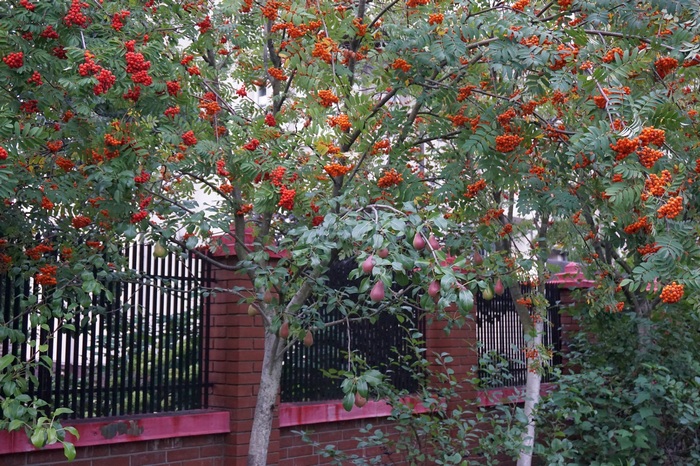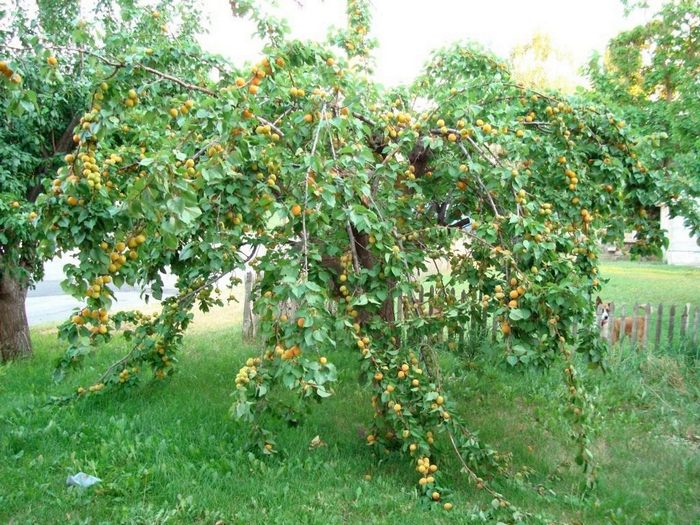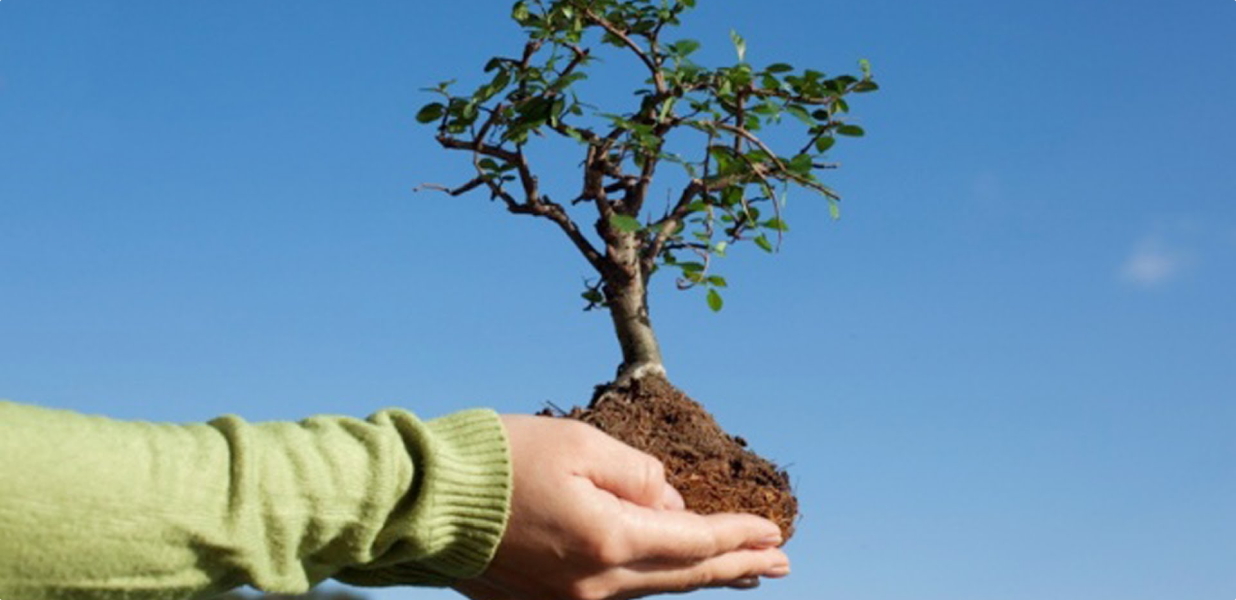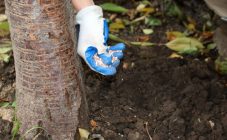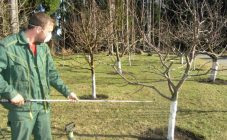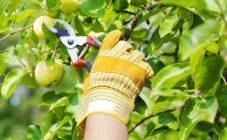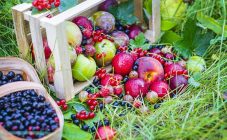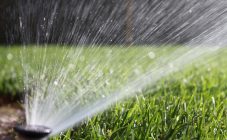Content:
Often inexperienced summer residents ask the same question: why in a neighboring area, tree branches bend under the weight of the fruit, and in our garden apple and plums do not bear fruit at all? They mistakenly believe that the reason for the crop failure lies in the wrong selection of varieties of fruit and berry crops. But actually it is not. The secret of a rich harvest of fruits and berries is simple - it is the compatibility of fruit trees and shrubs.
The first step is to properly plan the summer cottage: determine where the house will be built, where the outbuildings will be located.
Planning garden plantings should begin with orienting the suburban area to the cardinal points. Determine which areas of the site will be illuminated by the sun better, and where to place shade-loving crops. The most successful for the garden are the southern and southeastern sides, since it is here that a warm microclimate is formed, favorable for fruit plants. It is better to plant trees and shrubs in rows: the outer ones are low-growing berries, and the inner ones are tall trees. This arrangement will reduce the struggle of plants for light.
In addition, it is important to determine the features of the relief, the type of soil and the depth of the groundwater. Whether a plant can develop here directly depends on these natural features. For example, if the groundwater is close, and there are a lot of mineral salts in the soil, then it is better to give up growing grapes on such a site right away.
Garden Plants Compatibility Chart
The next step on the path to a rich garden is to define the assortment of fruit and berry crops. Most often, in the gardens in central Russia, they grow: apple trees, pears, sweet cherries, plums, cherries, raspberries, currants and gooseberries. On the plots of experienced gardeners, you can find sea buckthorn, blackberries, peaches and grapes.
After the list of fruit crops has been determined, a compatibility table should be drawn up. She will tell you which fruit trees should never be planted nearby, and which ones you can. How do you create such a useful table? First of all, the reasons for the incompatibility of cultures should be determined:
- features of the structure of the roots;
- the scope of the branches;
- the need for minerals;
- common diseases and pests;
- the ability to release biologically active substances that can depress or beneficially affect other plants.
An analysis of these features makes it easy to determine a useful combination of fruit and berry crops in the garden. For example, an apple tree will feel good next to honeysuckle and quince, and the neighborhood with golden currants is highly undesirable. Moreover, the berry bush itself develops excellently next to the oppressed apple tree: powerful bushes reach 1.6-1.9 m, the yield increases. Also, do not plant cherries, cherries or plums next to apple trees.
The ideal way to plant garden plants is to plant crops in small groups of the same species (2-3 plants) so that there is a distance of 2-3 m between them. All the plants will feel great. In addition, single-species plantings are better pollinated by insects, which means that the fruit harvest will be richer.
Unfortunately, the size of summer cottages in the country is limited to six hundred square meters.Therefore, it will not be possible to grow apple, cherry, pear and peach orchards in one area. But the compatibility of plants will have to be taken into account.
What fruit trees can not be planted nearby
If the gardener decides to grow fruit and ornamental shrubs, then it is better to find a place for them outside the site. For example, rowan, hawthorn or viburnum can be planted along the fence from the street side. It is important to ensure the spatial isolation of these plants from fruit trees and berries. They are unpretentious, grow and develop quickly, therefore they easily suppress the growth of cultivated plants.
Planting a useful sea buckthorn in the garden can turn into a real war for a summer resident with this shrub. After all, it multiplies so quickly that in just a couple of years, sea buckthorn thickets will take away all living space from fruit trees. You can limit the growth of roots using an artificial obstacle.
A pear will not tolerate cherries and plums next to it. Cherry plums cannot be planted next to apple and cherry trees. Peach grows poorly in the vicinity of walnuts and pears. But the most capricious fruit is the apricot. It has the lowest degree of compatibility with other fruit trees, since no garden crop can fight for sunlight and minerals with apricot. The crown of an adult tree reaches 3.2-3.8 m, and the diameter of the root system is more than 2.1 m. A small plum tree will develop well only if there is a distance of at least 4 m between it and the apricot.
About the neighborhood of coniferous and fruit trees
It is known that the coniferous forest is a source of useful phytoncides. These substances destroy pathogens, make the air clean and healthy for humans. In addition, conifers are distinguished by their beauty and unpretentiousness. Therefore, every summer resident wants to decorate his garden with spruce or pine.
However, conifers and fruit trees do not get along well together. For example, the pine will outperform any fruit tree in the fight for sunlight. Spruce grows well and develops in shady, humid places, so it can be planted in the northern part of the site. However, spruce contributes to soil acidification. This can lead to the death of fruit trees.
A juniper bush can become a real decoration of the garden. This ephedra is not picky about light, moisture and minerals. Firmly endures frost. But on its thorny shoots, a dangerous rust fungus often settles, which can infect almost all types of fruit crops.
Thus, the compatibility of conifers with fruit trees is undesirable.
Tips & Tricks
In order for the dacha to bring joy, you need to know and follow simple rules:
- Planting fruit trees and berry bushes should be carried out taking into account the physiological characteristics of plants.
- The layout of crops takes into account the peculiarities of the microclimate, soil, groundwater and other environmental factors.
- A garden planted in a hurry will not yield a large harvest. Quite quickly, the plants will begin to oppress each other and will soon die.
The correct approach, a clear sequence of planning and planting fruit and berry crops, careful care and compatibility of plants in the garden are the way to a generous harvest.

